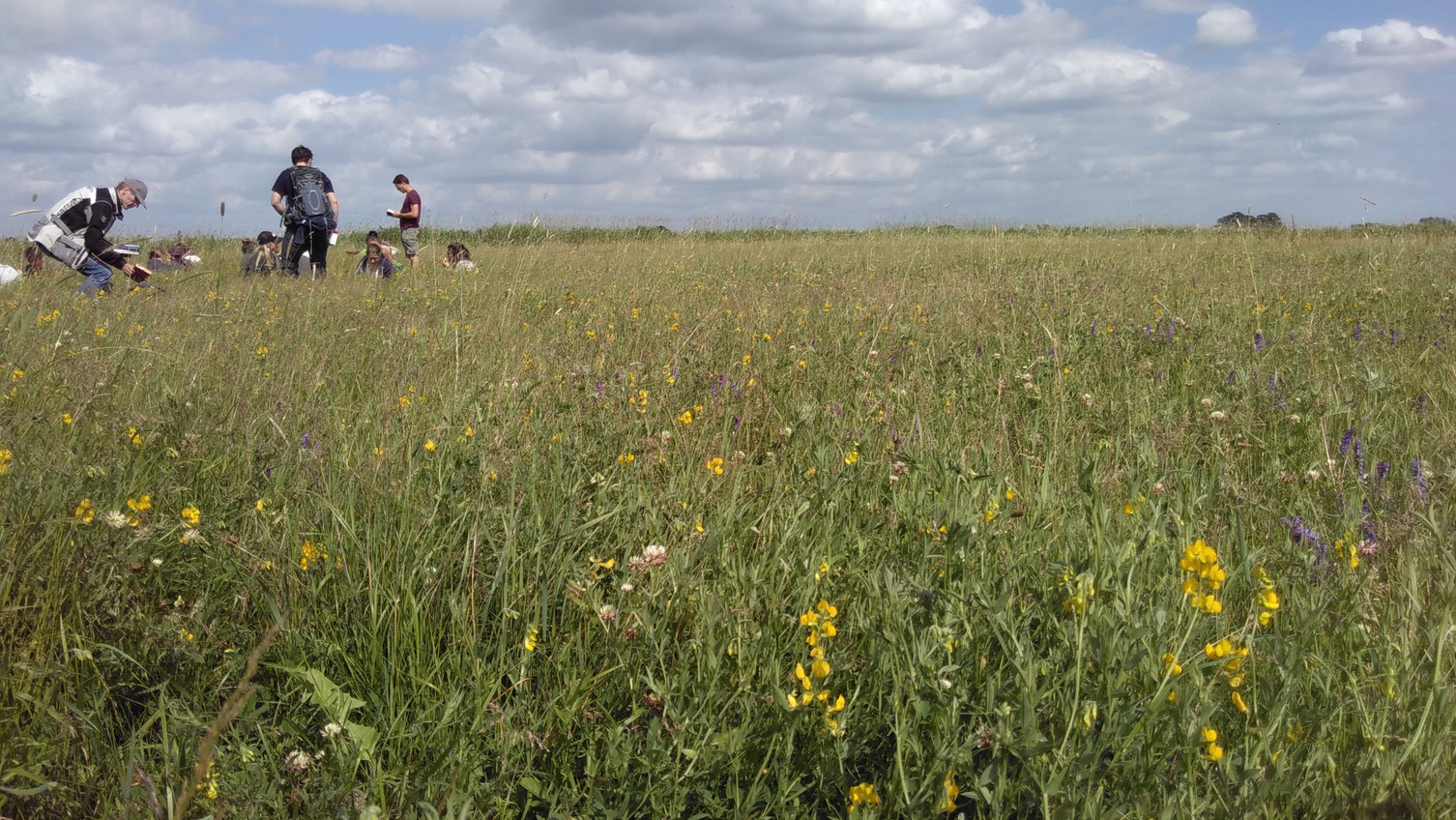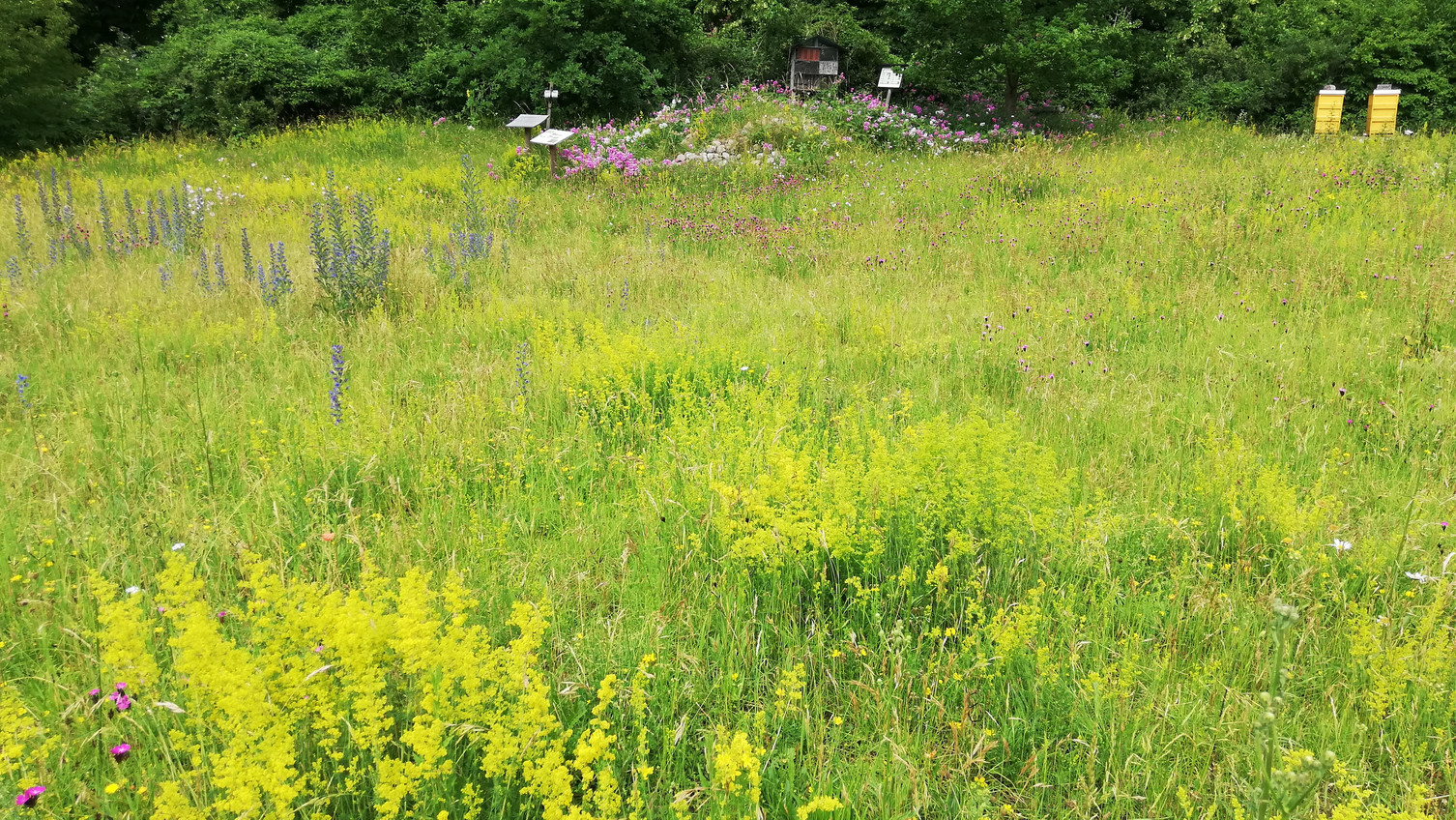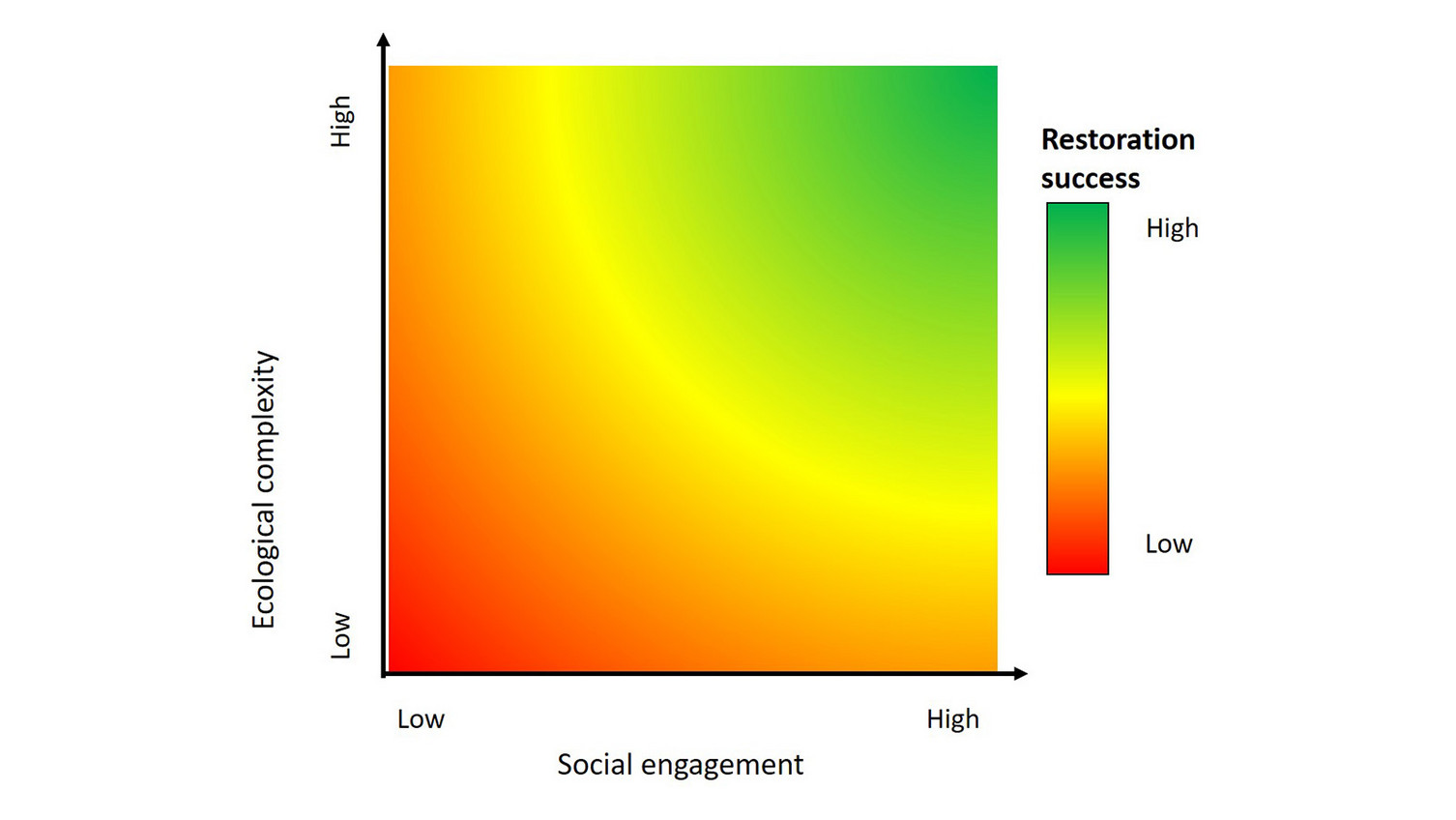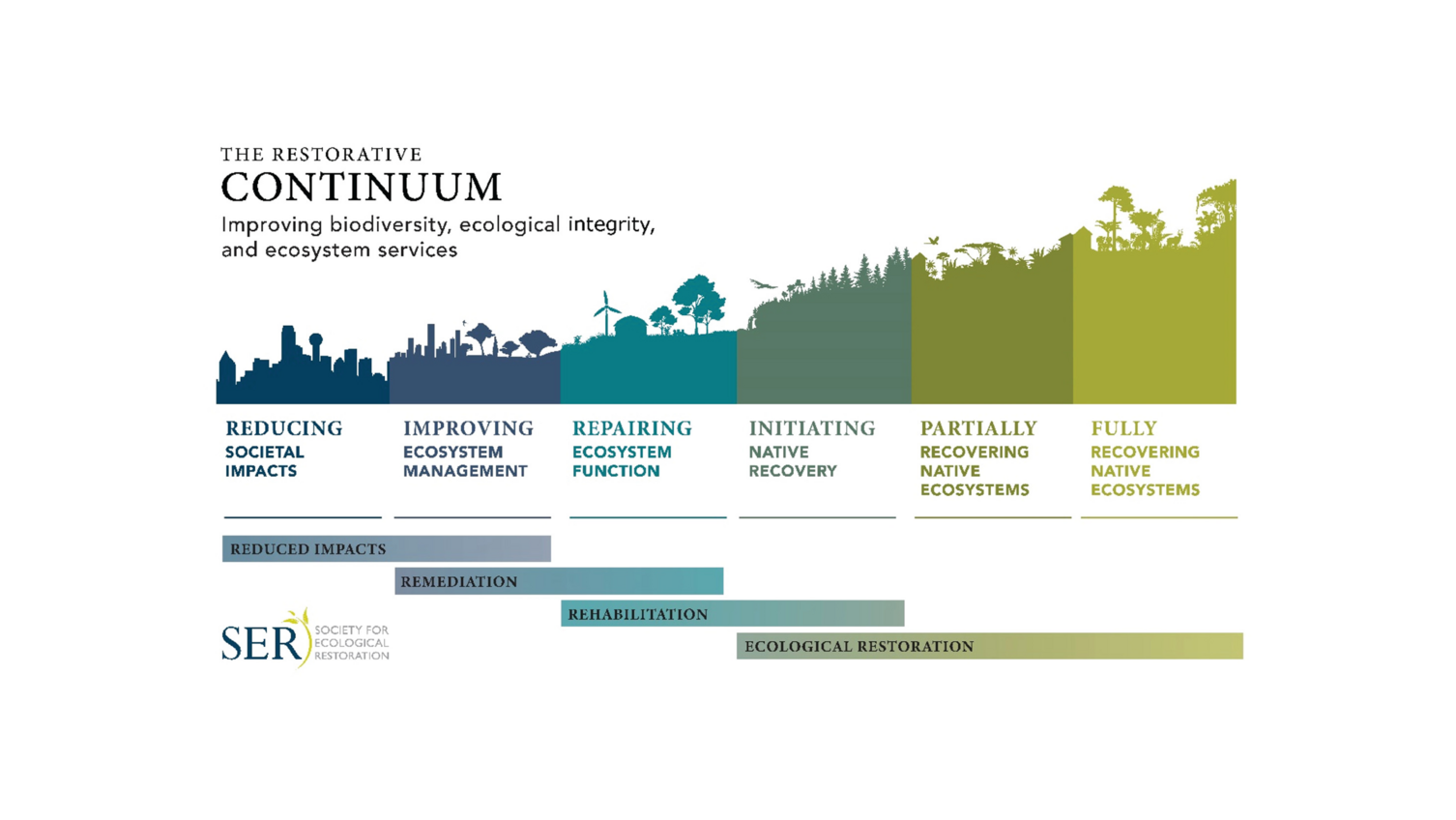Grassworks
What works and why in grassland restoration in Germany? A multi-region social-ecological assessment and pilot implementation of successful approaches.
"The value and the significance of ecosystem functions for us humans, for society and for our economy are not being adequately considered in political and economic decisions.”
Quote from the FEdA Initiative on Research in Conservation of Biodiversity funded by the Federal Ministry of Education and Research, BMBF
Globally, grasslands cover around one third of the land surface, and belong to the most biodiverse ecosystems. Some grasslands, such as calcareous low-nutrient grasslands in Romania, for example, are at small scale more diverse than tropical rainforests (Wilson et al. 2012). But in the past decades, most biodiverse grasslands have become building space, crop fields, or forests; and the remaining meadows and pastures have lost many of their species. In Lower Saxony for example, nearly half of the grassland area is gone, and only 10% is still a biodiverse habitat (Leuschner et al. 2013). Grasslands need extensive management and use to keep their high biodiversity and ecosystem value; by this we mean no use of fertilizers and regular but infrequent mowing or grazing. These valuable habitats disappear when they are used intensively, but also when they are not managed at all (Temperton 2013).
All over Europe, biodiverse grasslands have developed through traditional, sustainable land use systems. Their stability is a result of a mutual interdependence between social systems and ecosystems; biodiversity in such systems is therefore a product of sustainable land use (Fischer et al. 2012). One of today’s critical challenges is to repair or reinvent these traditional ties between people and grasslands, as they represent one of the key missing links in terms of biodiversity that we have lost (see insect decline across many habitats). A strict paradigm of protection & preservation will most probably not be successful in grassland restoration (Martín-López & Montes 2015) Instead, new integrated approaches to social-ecological restoration that explicitly consider the human dimensions of the story and of conservation are necessary.
In this context, the project Grassworks analyses the factors that lead to a successful restoration of grasslands in Germany. Here we include ecological, social-ecological and socioeconomic facets in a comprehensive analysis including data synthesis and social-ecological integration of the findings. With our results we aim to contribute to answering the question how pastures and meadows can be successfully restored and managed in such a way that ecosystems of high ecological value can develop and be sustained, whilst also ensuring that farmers receive fair payments for these services of increasing importance (biodiversity and carbon storage) for common welfare.
Research design: an inter- and transdisciplinary project
Researchers from ecology, social science, sustainability science, environmental economics and governance collaborate with the national-level German Association for Landscape Management (Deutscher Verband für Landschaftspflege) to better understand how and under which conditions restoration projects are successful (and concomitantly when they are less successful). For this, Grassworks takes an inter- and transdisciplinary approach with strong disciplinary expertise and social-ecological integration and synthesis.
The project focuses on three model regions in North, Central and South Germany, that vary in their economic, social-ecological and socioeconomic contextual conditions. In each model region two approaches are followed:
1. Post-hoc analysis of 40 existing restoration sites (already restored), along with 10 negative reference sites and 10 positive reference sites, each including their ecological, social-ecological and socioeconomic assessment
2. Transdisciplinary realization of restoration projects in one living lab per model region in collaboration with local stakeholders and cross-linked with relevant actors from federal state level and national level.
A positive reference site is one that acts as a goal template for what we would like the restored site to develop into. A negative reference site is a degraded unrestored area. Restoration success will be explicitly assessed using both positive (conventional) and negative (unusual) reference conditions of other similar grasslands.
Hypothesis
Grassworks starts out from the hypothesis that biodiversity restoration success depends on the extent to which projects address the diverse levels of ecological complexity, as well as the social engagement of diverse stakeholders. The latter implies appropriate support by the governance system (policy instruments, planning and financial instruments, valuing of species-rich grasslands). Restoration success as an outcome is shown as a gradient of colours, moving from low success based on low ecological and social engagement (red), through intermediate (yellow) to high restoration success derived from high values on both axes (green). The colour gradation thus represents a third axis.
Our research questions
(i) Which social and ecological drivers influence the restoration of biodiversity (plants, butterflies and bees) and landscape multifunctionality?
(ii) Which social-ecological variables need to be monitored to comprehensively gauge restoration success?
(iii) How can better governance systems, and ways of engaging stakeholders, be designed to make restoration more successful?
(iv) How do differences in socio-political and environmental context between the three model regions modulate social-ecological restoration success?
With Grassworks we wish to contribute to the comprehensive and global transformation to reversing species and habitat loss and focus on a greater appreciation of grassland biodiversity and its many ecosystem functions and services. This is a restoration project in the German FEdA Initiative (Research Initiative for the Conservation of Biodiversity from the German Federal Ministry of Education and Research, BMBF) and we hope to receive national and international attention for our integrative analysis of restoration success in three model regions across Germany. This approach allows us to analyse the variability of success within and between the model regions North, Central, and South.
Initiator and applicant
Prof.in Dr. Vicky Temperton Leuphana Universität Lüneburg Tel. +49 4131 6772960 https://www.leuphana.de/institute/institut-fuer-oekologie/personen/vicky-temperton.html |
Management and coordination with the participation of
Prof.in Dr. Anita Kirmer Hochschule Anhalt Tel. +49 3471 3551245 https://www.hs-anhalt.de/hochschule-anhalt/service/personenverzeichnis/dr-anita-kirmer.html |
Participating researchers
Leuphana University, Faculty of Sustainability, Social-Ecological Systems Institute Prof. Dr. Jörn Fischer (joern.fischer@uni.leuphana.de) Prof.in Dr. Berta Martín-López (berta.martin-lopez@leuphana.de) Dr. Miguel Á. Cebrián-Piqueras (miguel.cebrian@leuphana.de) Lukas Kuhn (lukas.kuhn@leuphana.de)
| Leuphana University, Faculty of Sustainability, Institute of Ecology Prof.in Dr. Vicky Temperton (vicky.temperton@leuphana.de) Prof.in Dr. Jacqueline Loos (jacqueline.loos@leuphana.de) Alina Twerski (alina.twerski@leuphana.de) Christin Juno Laschke (christin.laschke@leuphana.de) Ioana Alexandra Patru-Duse (ioana.duse@leuphana.de)
|
Hochschule Anhalt, University of Applied Sciences, Vegetation Science and Landscape Ecology, Bernburg Prof.in Dr. Anita Kirmer (anita.kirmer@hs-anhalt.de) Prof.in Dr. Sabine Tischew (Sabine.Tischew@hs-anhalt.de) Konrad Gray (konrad.gray@hs-anhalt.de) Annika Schmidt (annika.schmidt@hs-anhalt.de) Line Sturm (line.sturm@hs-anhalt.de)
| Technical University of Munich, TUM School of Life Sciences, Restoration Ecology Prof. Dr. Johannes Kollmann (jkollmann@wzw.tum.de) Moritz Ptacek (moritz.ptacek@tum.de) Miriam Wiesmeier (miriam.wiesmeier@tum.de)
|
Greifswald University, Chair of AVWL and Landscape Economics Prof. Dr. Volker Beckmann (volker.beckmann@uni-greifswald.de) Dr. Regina Neudert (regina.neudert@uni-greifswald.de)
| Johann Heinrich von Thünen-Institut, Institute of Biodiversity PD Dr. Jan Thiele (jan.thiele@thuenen.de) Dr. Petra Dieker (petra.dieker@thuenen.de) Philipp Laeseke (philipp.laeseke@thuenen.de)
|
Deutscher Verband für Landschaftspflege (DVL) Dr. Jürgen Metzner (metzner@lpv.de) Liselotte Unseld (l.unseld@dvl.org) Desirée Lohwasser (d.lohwasser@dvl.org | Research Associates Dr. Julia Mildorfova Leventon, Head of Department of Human Dimensions and Global Change, Czech Globe, CZ (leventon.j@czechglobe.cz) Dr. Felix May, Freie Universität Berlin (felix.may@fu-berlin.de) Dr. Manuel Pacheco Romero, Social-Ecological Systems Institute (SESI), Leuphana University (manuel.pacheco_romero@leuphana.de) Dr. Emanuela Weidlich, Institute of Ecology, Leuphana University (emanuela.weidlich@leuphana.de) |
The bigger picture: the importance and meaning of restoration ecology and ecological restoration
Large parts of the earth’s surface are degraded and need to be restored urgently in order to avert massive damage from the earth’s biophysical basis. The restoration of ecosystems, especially open ecosystems that harbour large proportions of our biodiversity in Europe, offers the opportunity to tackle several of the pressing challenges of our time jointly by thinking the climate crisis together with the biodiversity crisis and food security. Thus, we can create important solution pathways and win-win scenarios for pressing challenges of our time (Temperton et al. 2019). In this context, the United Nations General Assembly declared 2021–30 the United Nations Decade on Ecosystem Restoration. Many „Natural Climate Solutions“ programmes that include both climate change mitigation and restoration (e.g. the UN Bonn Challenge focus strongly on tree planting (often of non-native plantation trees) and forests and do not adequately consider the alternative of equally strongly investing in the remarkable benefits of restoring grasslands (high resilience, long term storage of carbon in the soil, considering albedo effects that counteract climate warming rather than just carbon storage, a wide variety of ecosystem services). At a meta-level, Grassworks aims to highlight these benefits and strongly argues to consider restoring degraded grasslands to resilient biodiverse grasslands instead of only planting trees. A better understanding of what leads to restoration success will be an essential component of success in this area.
Ecological restoration involves interventions which initiate and foster development from a degraded ecosystem back to a habitat with strong ecosystem structure, high biodiversity and a variety of ecosystem functions and services. In Grassworks we strive to actively participate in the current restoration dialogue asking to what extent (in a rapidly changing world with climate change and high nutrient inputs to ecosystems) we can achieve ambitious restoration goals (with a focus on restoring a suite of species that were previously at a site, the right hand side of the restoration continuum in the restoration standards, Gann et al. 2019), and in which cases more of a focus on generally restoring some biodiversity as well as ecosystem functions and specific service (the left hand side of the restoration continuum in Gann et al. 2019) may be more appropriate.
"Exactly as it used to be" can often no longer be the goal of restoration, because the environment has already changed (including nitrogen input, destruction of topsoil, climate change) and continues to be subject to strong changes. Instead, the newly created habitats must be able to be maintained under current and future site conditions.”
The two most important goals of any restoration project in the future will therefore be:
1. To restore the biodiversity and multifunctionality of the ecosystem
2. To provide services and products that are of value to humans.
The first point, then, concerns the value of nature in itself, without a concrete benefit for humans. Here we are talking about ecosystem functions such as the presence of certain species, ecological niches or a complete food chain. The second point describes ecosystem services such as carbon storage in soil and plants, pollination of surrounding fields and trees, agricultural products (species-rich hay, milk, meat, leather) or even a beautiful landscape that can be used for tourism. Multifunctional grassland means not only the restoration of biodiversity, but also improving pollination, networking of ecosystems and establishing diverse possibilities of connecting people and nature. Furthermore, multifunctionality of grassland strengthens the resilience of the ecosystem and contributes to nature-based solutions in climate protection via the aspects of carbon storage, climate adaptation and water protection, among others.
Restoration ecology strengthens restoration practice through its practice-oriented research and continuously develops the knowledge base. Prof. Vicky Temperton's research group is involved in various projects, such as the DFG project POEM (PriOrity Effect Mechanisms). In this dry acidic grassland project, the researchers alter the order of arrival of e the plant functional groups legumes, forbs and grasses and investigate the effects on certain ecosystem functions (especially root productivity and aboveground productivity) and plant diversity. A special focus is on the investigation of the underground mechanisms of so-called priority effects caused by order of arrival and the role of weather in the establishment of these plant communities. The aim is to directly apply knowledge about the effects of temporal ecological development in order to be able to produce certain desired vegetation trajectories and multifunctional results in grassland restoration.
For further reading we can recommend these websites:
Forschung zum Erhalt der biologischen Vielfalt (FedA , BMBF) https://www.feda.bio/de/
Netzwerk Renaturierung https://renaweb.standortsanalyse.net/index.html
Offenlandinfo https://www.offenlandinfo.de/ueber-offenlandinfo/
Publications cited
Fischer et al. (2012): Conservation policy in traditional farming landscapes. Conservation Letters 5, pp. 167–175. DOI 10.1111/j.1755-263X.2012.00227.x. https://conbio.onlinelibrary.wiley.com/doi/pdf/10.1111/j.1755-263X.2012.00227.x
Fischer et al. (2021): Making the UN Decade on Ecosystem Restoration a Social-Ecological Endeavour. Trends in Ecology and Evolution 36, pp. 20-28. DOI 10.1016/j.tree.2020.08.018. https://www.sciencedirect.com/science/article/pii/S0169534720302482
Gann et al. (2019): International principles and standards for the practice of ecological restoration. Second edition. Restoration Ecology 27, S1-S46. DOI 10.1111/rec.13035. https://onlinelibrary.wiley.com/doi/epdf/10.1111/rec.13035
Leuschner et al. 2013: Veränderungen und Verarmung in der Offenlandvegetation Norddeutschlands seit den 1950er Jahren: Wiederholungsaufnahmen in Äckern, Grünland und Fließgewässern. Berichte der Reinhold-Tüxen-Gesellschaft 25, pp. 166-182. https://www.zobodat.at/pdf/Ber-Reinh-Tuexen-Ges_25_0166-0182.pdf
Martín-López & Montes (2015): Restoring the human capacity for conserving biodiversity: a social–ecological approach. Sustainability Science 10, pp. 699–706. DOI 10.1007/s11625-014-0283-3. https://link.springer.com/content/pdf/10.1007/s11625-014-0283-3.pdf
Temperton (2013): Die Renaturierung von Graslandbeständen als komplexes System. In: Beck (Hrsg.): Die Vielfalt des Lebens: Wie hoch, wie komplex, warum? Wiley VCH. https://www.wiley.com/en-us/Die+Vielfalt+des+Lebens%3A+Wie+hoch%2C+wie+komplex%2C+warum%3F-p-9783527665563
Temperton et al. (2019): Step back from the forest and step up to the Bonn Challenge: how a broad ecological perspective can promote successful landscape restoration. Restoration Ecology 27, pp. 705–719. DOI 10.1111/rec.12989. https://onlinelibrary.wiley.com/doi/epdf/10.1111/rec.12989
Wilson et al. (2012): Plant species richness: the world records. Journal of Vegetation Science 23, 796-802. DOI 10.1111/j.1654-1103.2012.01400.x. https://onlinelibrary.wiley.com/doi/epdf/10.1111/j.1654-1103.2012.01400.x





